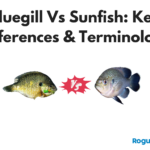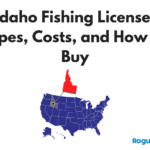Are you looking for a resource to quickly run a HIN / HULL ID check on your boat or pontoon in 2023?
Hey guys, we know the importance of running a HIN / HULL check and understand that you are looking for the most reputable service to do it. We researched so you don’t have to and found the best place to go for the best value. To run a thorough HIN utilizing 70 different databases, more than any other service, check the link below. More detail on what HULL numbers are and why boat HIN checks are essential follows.
Your boat comes with a unique code called the Hull Identification Number or HIN, which carries a lot of helpful information. When you run a boat HIN / Hull ID check instantly, you learn essential information about the vessel’s manufacturer and owner. In this article, we’ll cover everything you need to know about HIN / Hull ID numbers for a speedboat, pontoon boat, deck boat, and any other type of vessel to have peace of mind with your boat purchase.
Owning the Right Boat Starts with Knowing its History
What’s included with each search?
- Accident Checks USA
- Pollution Incidents USA
- Theft Check USA & International
- Salvage & Total Loss USA
- NMVTIS Check 48 States
- Boat Recalls
- Year and Month of Manufacture
- Auctioned Vessels
- Abandonment or Misappropriation
- Manufacturer Data Validation
- Model Name Exact or Close
- Insurance Companies Branded Titles
- HIN Validation
- USA Registration if available
- Some Lien databases
- Claims and State Issued HIN’s
- Full HIN Decoder
- Boat Value Calculator
- Previous Boat Names
- USA Documentation Numbers
- Cross Check Official numbers
- Canadian Registration (Federal)
- Canadian Licencing PCL (Provincial)
- Canadian Theft Database

What you Receive with Our Highly Rated HIN Search
A Detailed Search
Our recommended HIN search checks 72 private & public, state, and federal databases for your HULL ID and provides a search report summary that is 9-pages instantly.
An Accurate Search
Our recommended HIN search provides all the boatfax data and indicators in the report and does not hold anything back. Our recommended HIN search does a boat history search but doesn’t guarantee how much boat history report data is found because it is a search service.
A Secure Search
Paypal, Clickbank, and ConvergePay are the internet’s leading shopping carts, providing a secure and easy-to-use method for internet shoppers to purchase digital products from trusted global merchants. Our recommended HIN search servers never see your credit card, and all traffic is securely encrypted.
What are Hull Identification Numbers?
The Hull Identification Number, or HIN, for short, of a vessel, is a 12-digit ID number. The HIN is an alphanumeric combination encoded by authorities with additional encryption for essential data security links a vessel to its owner and manufacturer. Thus, every vessel’s HIN is unique, and it distinguishes one boat from another. You can run a boat HIN / Hull ID check instantly in our recommended systems to decode all the information it contains. You may want this information about a boat for legal purposes or return a lost boat to its owner. Manufacturers link vessels to two types of HIN – the primary HIN and the secondary HIN.
Additional Important Information about HIN / Hull IDs
As you may be aware, a HIN is the nautical equivalent of a car’s VIN or Vehicle Identification Number. It is like a serial number that reflects on all paperwork, like the certificate of manufacture, registration, title, or legal documents. Please write down your boat’s HIN and keep it with you like an automobile. You’ll want to save it outside of your boat, as you’ll need it if your boat goes adrift, gets stolen, or has a warranty issue.
Where is my HIN / Hull ID Located on a Boat With Transoms?
The HIN on a boat with transoms is placed on the starboard outboard side about two inches of the lowest among the transom, hull/deck joint, and gunwale.
Where is my HIN / Hull ID Located on a Boat without Transoms?
The HIN on a boat without transoms is found on the starboard outboard side in the aft, within one foot of the stern, and two inches of lowest among the transom, hull/deck joint, and gunwale.
Where is my HIN / Hull ID Located on a Pontoon Boat?
The HIN on a pontoon boat is placed in the aft crossbeam within one foot of the starboard’s hull attachment. Usually, the HIN should be placed near the starboard outboard side. Not exceeding two inches from the hull/deck joint, transom, or gunwale, whichever is lowest for the boat. This is particularly true if any accessory, like the rails, will likely obscure the HIN.
As for the secondary HIN, it should be kept unexposed inside the boat, and it can also be kept under a hardware item or fitting. If the primary HIN is not found, the manufacturer can help find the secondary HN, though the Coast Guard prefers the usage of the original HIN.
Proper HIN Placement
To properly place the HIN on the boat, you need to ensure that its affixation process is permanent. Methods like carving, burning, embossing, molding, stamping, or bonding can be used to ensure that numbers cannot be defaced. Even if you want to put the number on a separate plate, this plate must be fixed to the boat so that removal will not be easy. Any attempt to do so will scar and damage the surrounding area. Make sure not to attach the HIN to a removable part of the boat.
Decoding HULL Identification Number
There are two formats of HIN, depending on the time when the boat has been manufactured. The first method of encoding information in the HULL was created for vessels made between 1972 and 1984.
This type of HIN has three types of information. The first three characters represent the manufacturer’s ID code or MIC, while the following five characters include the boat’s serial number. The last four characters, all of which are numbers, show the month and year of manufacturing the boat.
In the second method, the HIN can be divided into four parts. While the first two parts are the same, the third part consists of two characters representing a month and a date. The fourth part shows the year of manufacturing the model. This method of encoding is used in boats built after 1984.

What’s Included in Your HIN Background Check
It is essential to run a boat HIN / HULL ID check instantly if you plan to buy a used boat. By performing a boat owner lookup by HULL number, you will get all information about the boat that the owner might have hidden from you. These include:
Accident Record: Information about the vessel’s history of accidents that led to injuries, deaths, disappearances, damage, etc.
Pollution Incidents: A record of the boat’s disposal of chemical washing, raw sewage, garbage, wastes like discarded fishing nets, plastic, metal, ashes, etc.
Theft Check: The stolen record of the boat registered with the state maritime authority, i.e., whether the boat is stolen or not.
Salvage and Loss: Whether the boat has been recovered from a shipwreck, abandonment, or other situation, along with the revenue loss or the cost of space.
NMVTIS Check: Whether the boat’s title information is accurate, legitimate, or valid in all title-holding states.
Safety Recalls: Whether the boat or its accessories have safety issues.
Auctioned Vessel: Whether the boat has been up for auction – and its current status.
Lien or Claims: Whether there is a privileged claim on the boat.
Previous Boat Names: Record of whether any name has been previously documented.
Most importantly, a background check helps to decode the HIN to verify and cross-check the documentation numbers, date of manufacturing, the value of the boat, and more.
Run a Boat HIN / HULL ID Check Summary
Performing a boat owner lookup by HULL number can be necessary for legal reasons, to return a lost boat to its rightful owner, and to know about the vessel’s status if you want to buy a used one. Legal authorities in your state can perform this check to inspect suspicious activities.
You can also reach out to online services to instantly run a boat HIN / HULL ID check. If you liked this post, you may also be interested in the best fish and ski boats, the best ways to book a fishing charter or how to pass a fishing boat.





